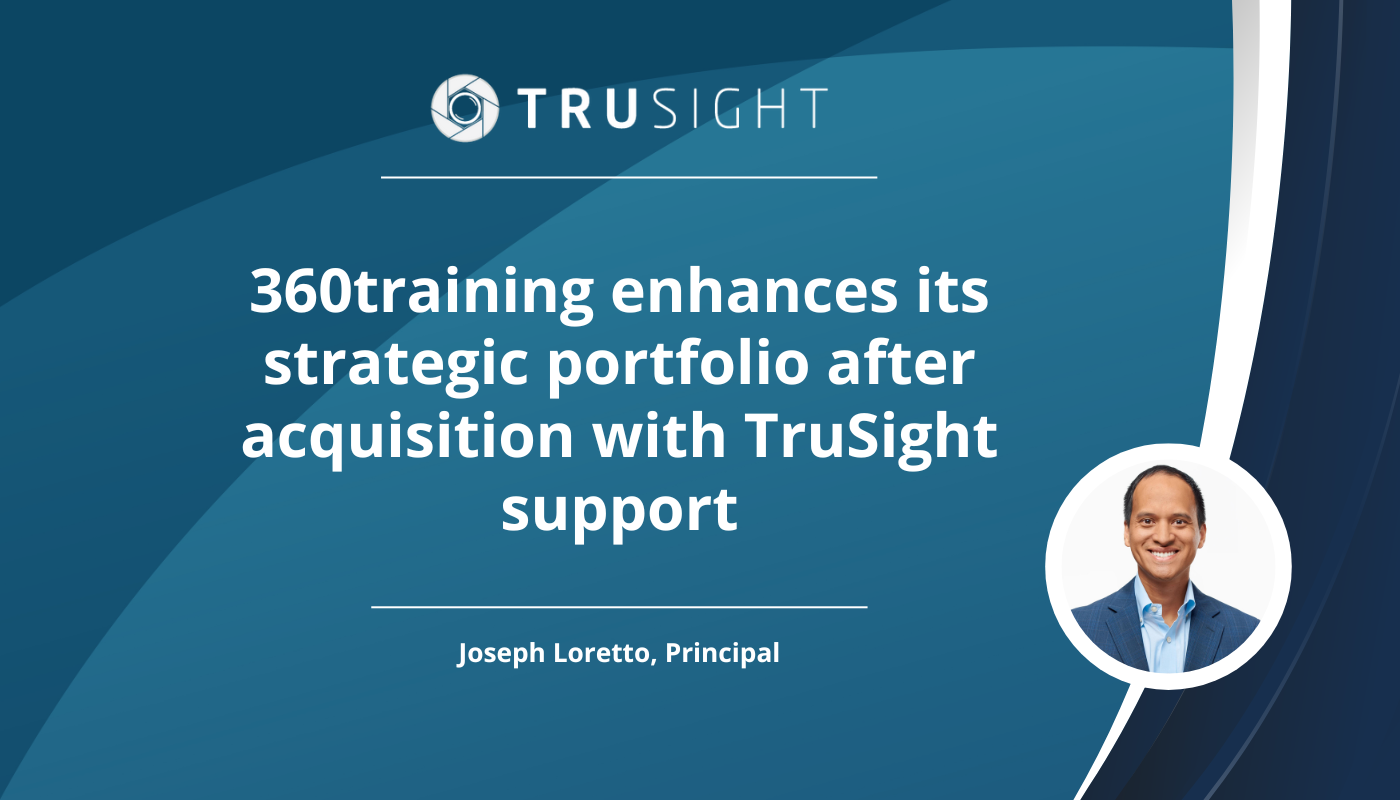Many of our sell-side investment bank partners reach out to us for insights about potential clients. They provide a quick overview of the company’s profile, along with a snapshot of its financials, and ask us for our take.
In other words, they’re asking if the market is active enough, and the company strong enough, for the deal to get done.
Whether you’re on the buy-side or the sell-side, accessing your existing network is the fastest way to understand a market. Your connections may have recently completed a deal in the industry, or they can provide anecdotal evidence from others in their broader network.
As an industry-agnostic firm, TruSight has worked deals in dozens of industries and can give experienced off-the-cuff insights into different industries or adjacent verticals and sub-sectors.
“We can quickly share what we know, whether there’s a lot of consolidation, if the market is fragmented, or if the multiples are high. Or, we can evaluate if there’s a small universe of potential targets, but the valuations and multiples are very reasonable,” said Jennifer Davis, who leads TruSight’s proprietary search practice.
“It helps them prioritize their focus," she said.
On paper, a company that a banker is evaluating may look great, if it has a phenomenal growth record, substantial revenue and profit, high-quality products and a strong management team. But how that company compares with the rest of the market is what matters.
As a firm standard, we always recommend deeper analysis, starting with looking for recent and past transactions on Private Equity Info. TruSight acquired the M&A data platform in 2022 to accelerate our research capabilities and deliver first-class industry trends and market reports to our clients.
Prioritizing more research is something we advocate on the buy-side, as well. Most private equity firms have a general sense of a market as well as a clear investment thesis in mind: a focus on an industry or sub-sector, in financial ranges that are familiar to them in terms of their team’s deal-making experience.
Oftentimes, initial research is performed by junior analysts and interns who are trying to get a general sense of the market using basic M&A data tools. What we find is usually missing is detailed analysis: what are the specific companies that would be a fit for acquisition? And how do you reach them?
“After closing a fund, most private equity firms we speak with have already zeroed in on an industry and investment approach and understand the universe of potential targets,” Davis said. “The next step is the deeper research needed to identify and reach out to actual targets.”
When TruSight engages with a private equity investor embarking on a new industry, it’s fairly common for the number of private companies to be inflated by general market reports. If you’re planning on acquiring one or two companies, volume may not be as much of an issue. But if you’re doing a roll-up, you’ll need to understand the entire industry to assess if the volume is available. Even though you know what you want, you may not know how many real sellers are in the space. A thorough research process makes it clear, and that information can help a firm transition directly into target outreach.
Although there might be 5,000 firms that fit the broad framework of the thesis, when a fine filter is applied – and excludes factors like companies that are already private equity-backed, detailed financial criteria, geography and other qualitative aspects such as product specificity or management approach -- that number could drop to 800, 600 or even less.
How does TruSight complete this work? Typically, it starts with a detailed map of the market from answering critical questions.
- What specific criteria are you looking for, around EBITDA, revenue, or equity investment size?
- Are you seeking platforms or add-ons, or both?
- How many platform acquisitions are in the space that you may compete against?
- What transaction types are you open to? Growth investments, majority recaps or buyouts?
- What geography are you considering?
- How many targets are you looking for?
- How many of the targets are already backed by private equity?
- Is the market already consolidated, or still fragmented?
- What are the recent multiples?
You know what you’re hoping for: plenty of private companies without much private equity saturation. On the flip side, if there are no firms invested in the space, you may need to better understand why.
The name of the game is conviction: if you’re not absolutely convinced there’s a market, there’s too much money at stake. Better research can get you the answers you need.
%20-%20secta.ai.jpg?width=70&name=Brian%20James%20Kirk%20(6)%20-%20secta.ai.jpg)

.png)
